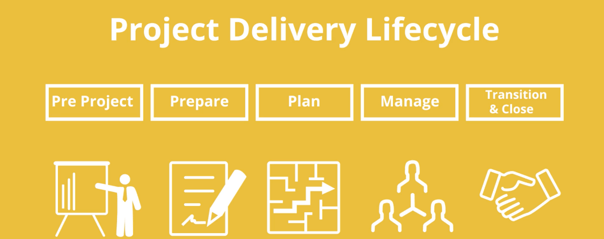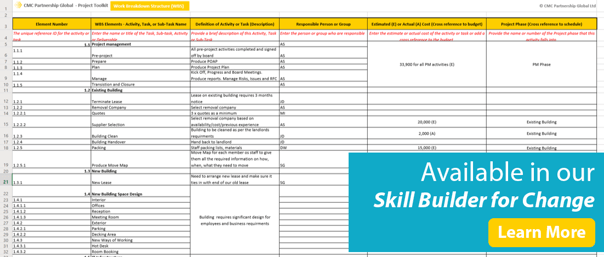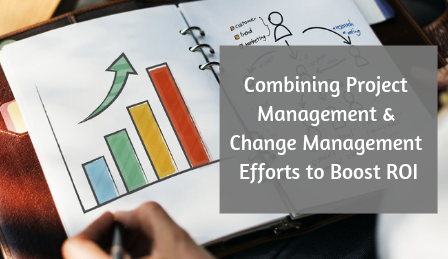It’s happened. You took part to the Senior Leadership Team meeting and the Head of Operations has announced that hybrid work is the new way of working and the company needs to bring the employees back to the office. But there is a twist! Due to the blend of working from home three times a week and going to the office for two days the company have decided to relocate the HQ to a smaller building 40 minutes’ drive from the historic site where the company was established 40 years ago.
You are thinking about the move’s implications for the 100 members of staff, how it is going to impact their motivation, how to manage resistance, how to prevent the great resignation. Yet, another twist as the Head of Operations said “Hey! You deal with projects around people, so you do it!”. Yes, when she said this, the Head of Operations was looking at you. And yes, she meant doing both change management and project management.
Gosh! You have lots of experience dealing with change management - the people side of change - but when it comes to project management, you dealt with some minor, unstructured projects in the past, and this is not exactly your cup of tea. But you are up for that promotion and want to show the Senior Execs in the organisation that you can do it. So, you hear yourself saying “Of course, not a problem! I can do both change management and project management, leave it with me”. And now? How can you tackle this challenge?
Here are 8 actionable tips on how to deal with your challenge:
1) Use the Project Lifecycle and a structured framework to enable progression of your project
2) Identify who does what
3) Plan before taking action
4) Define the scope of the project
5) Create the project management plan
6) Execute the project management plan
7) Close the project
8) Integrate project management and change management
Do you want to print these tips out for your office? Click here to download our 8 Project Management Tips for Change Projects Infographic.
1) Use the Project Delivery Lifecycle and a structured framework to enable progression of your project:
The PMI define the project lifecycle as “the series of phases that a project passes through from its initiation to its closure”. You want to make sure that you are starting the activities in the right order, at the right time and with the required authority. All the phases of the project management lifecycle are important and should not be left out. Use the phases as signposts to achieve the required results. There are many project management methodologies on the market and. we are not going to refer to a specific one. Instead, keep it simple and think about your project life cycle as comprising of five phases:
- Pre project
- Prepare
- Plan
- Manage
- Transition &Close.
This gives you an idea of how the project should be structured and how it progresses. Check the image below to get a better overview of the 5 phases.

2) Identify who does what:
Usually this is part of what in project management terms is defined as project governance, this being “the infrastructure dealing with responsibility and accountability that surrounds your project.” It is concerned with having the right people in place who can take ownership for the project and describes how a project is directed and controlled. In general terms you will have a Project Board (also called Steering Committee) that has the overall responsibility for the project (for example it authorises the budget and the management of escalated issues and risks). Within the project board there are different roles like the Sponsor, the person that provides the financial resources for the project and is ultimately accountable for the outcome of the project. There could be also the Senior User, that represents the interests of the final users’ requirements for the solution that the project is delivering, and the Senior Supplier, that represents the interests of the suppliers that provide resources to the project. Then, there is the Project Manager.
Remember that your role is to manage the project. You are going to plan the employees’ move and manage those that will have to move the furniture to the new HQ and communicate any issues that might arise. But you do not physically carry the chairs and desks from a location to the other. Be careful not to undertake responsibilities that are not in your remit!
3) Plan before taking action:
Think about project management in terms of the plan-then-do-model . It means that you do not have to rush into action but need to spend enough time planning. Without proper planning chaos is more likely to occur. Therefore, from the very beginning involve the sponsor and focus on creating the project charter, a document that answers why the idea of the project came about and what the project is going to deliver. This is a high-level plan for the project: for a small project like yours you can capture this information on a single page. Don’t overcomplicate things.
4) Define the scope of the project:
The scope sets the boundaries of the project and allows you to determine what falls within the project and what does not. Projects are often unsuccessful because of scope creep and the challenges linked to managing the deliverables, budget and schedule of the project. It is key to manage and control the scope in order to increase the probabilities of achieving success. The PMI defines “scope definition as the process of developing a detailed project scope statement as the basis for future project decisions.” You will come across lingo like “this is out of scope”, meaning that it does not fall within the project. You need to capture this information in the preliminary project scope statement.
5) Create the project management plan:
A project management plan shows how the project will be executed. You might ask “Hang on! I already have a project charter. Why do I have to create another document? Isn’t it a duplication?”. No, it is not! The project charter and the preliminary project scope statement are part of the initiation of the project and can be deemed as a “plan for the plan” used to define what the project is and its rationale at high level. They are inputs for the planning phase. The information will be refined as you gain more insight.
One common pitfall is to think that the plan and the project are the same thing. They are not: the plan is what is used to make the project work as it tells how the project will be done and informs the execution. Having a Gannt table does not mean having nailed the project! The project management plan usually includes elements like the scope statement, work breakdown structure (WBS), the timeline, the quality management plan, the human resources plan, the communications plan, the risk management plan. The image below shows you an example of a work breakdown structure. Remember project management isn’t a one size fits all approach, you must make sure your plan fits the scope.
6) Execute the project management plan:
Executing the project management plan is defined as the activities required to complete the work defined in the project management plan in order to accomplish project objectives defined in the project scope statement. This is the phase aimed at achieving the deliverables, those being the outputs of the project itself. You need to make sure that the progress of the project is monitored and recorded and that things are progressing according to plan. If they are not, appropriate actions need to be taken to correct the situation. As monitoring and controlling is one of the main responsibilities of the project manager, make sure you allocate enough time in your day-to-day schedule.
7) Close the project:
When the project comes to its end you will formally terminate all the activities. This means that the deliverables have been met and it is now possible to transfer the ownership to the business. It is useful to document lessons learned, identifying what worked and what did not. This information can be used for future similar projects to avoid having to reinvent the wheel. A word of warning: typically, when you get close to the closure of the project, the interest of the sponsor and main stakeholders tends to decrease as they feel it is now done and dusted. Make sure you keep the momentum going up to the very end, meaning up to when the deliverables have been completed and the project scope statement has been satisfied.
8) Integrate project management and change management:
This is a critical activity! In this project you are going to be both the project manager and the change manager. On one side, this is good news as you are in the position to deal with both the technical and the people side of change. On the other hand, it can be tough as you must balance the activities and the time that you spend on both. The risk is to focus mainly on the actual date when the HQ will be moved, instead of considering also how you are going to get the employees to adopt this new working arrangement. You can read more about integrating project management and change management here.
This is, at high level, the basic information that you need to know to set your project for success.
Feeling overwhelmed? You don’t need to. There is help at hand. At CMC Partnership Global we have created a Skill Builder for Change and it is all about Project Management. In a one-day interactive workshop, you’ll have access tools and templates that can be used to manage a project step by step. In this workshop you’ll bring with you a project that you are working on and start building your plan throughout the day. After the workshop you will have access to a portal with videos that help you reinforce the concepts detailed during the course and examples of documents like project on a page, work break down structure. After you have completed the course, you will also get a unique digital badge that can showcase your skills on Linkedin (and any social media platform) and help you find job roles relevant to your skills. For more information take a look at the course here or get in touch.




